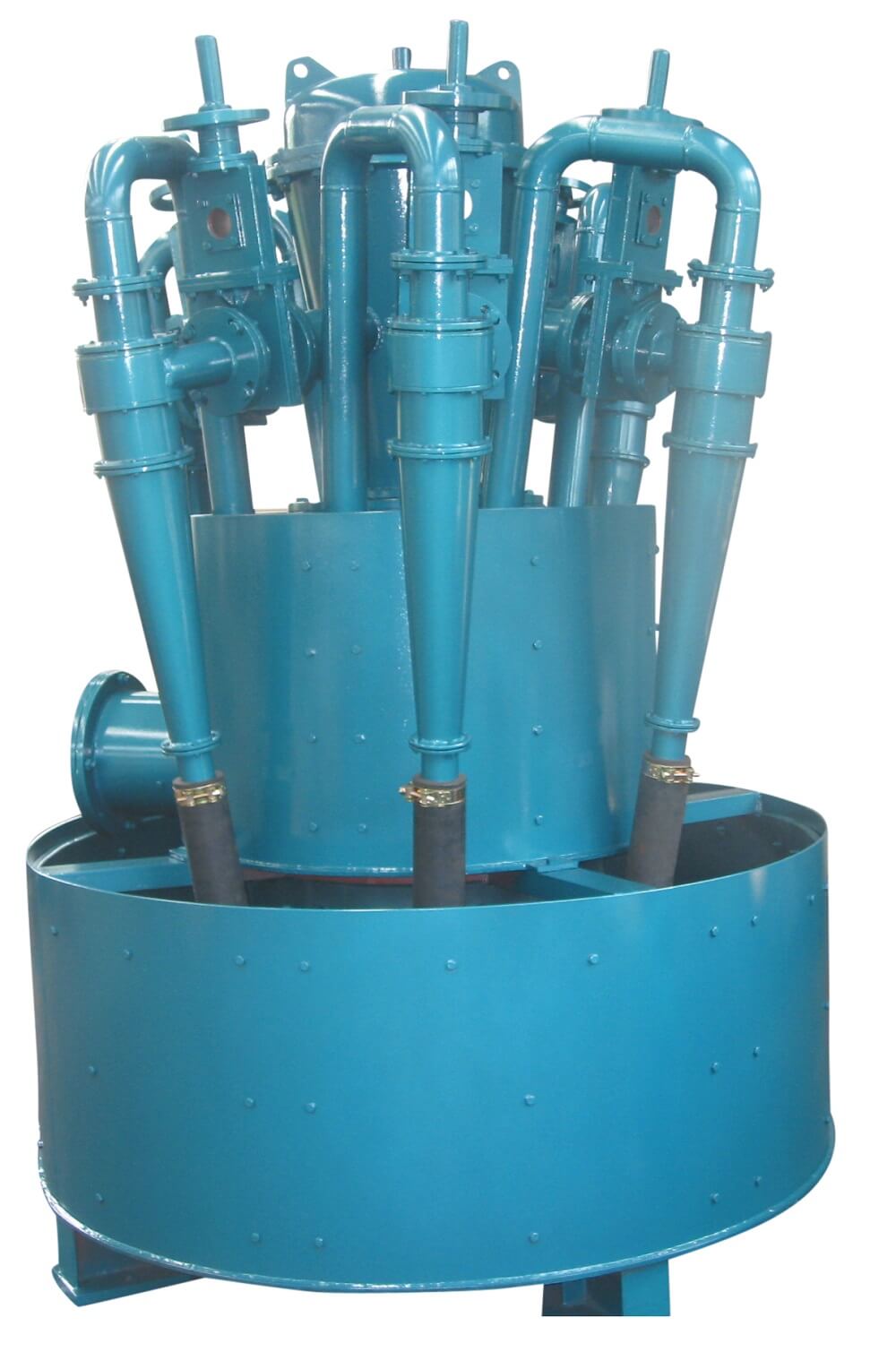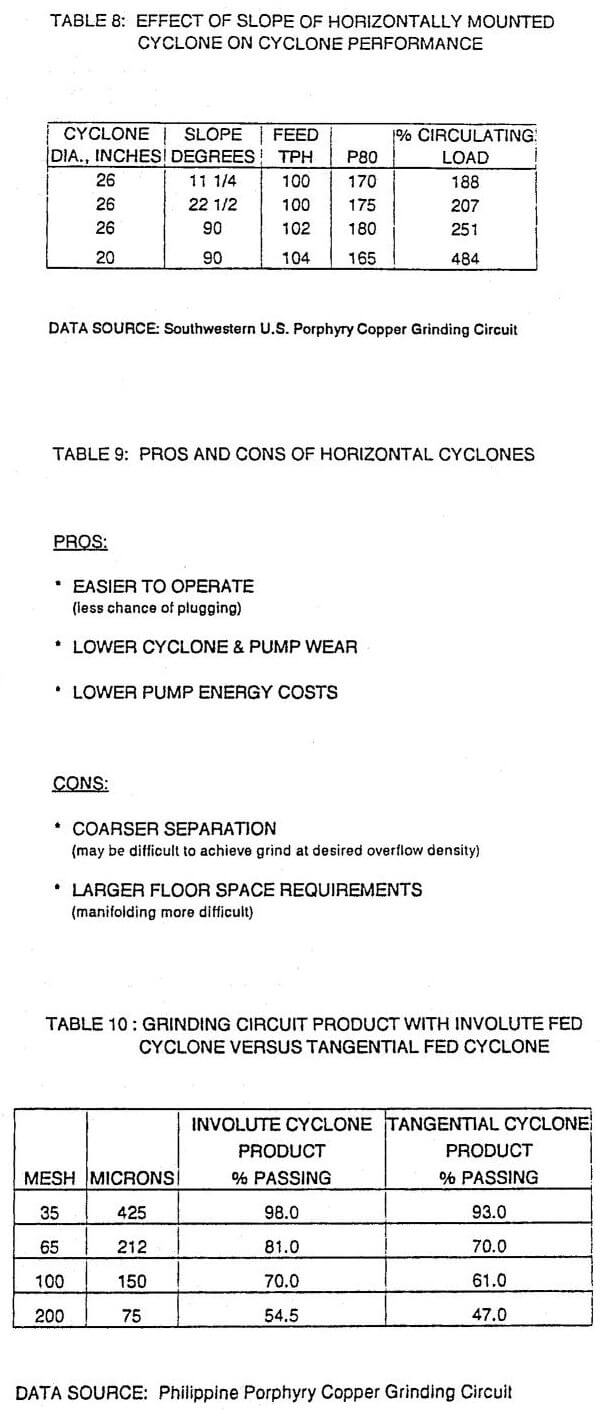The search for ways to further improve grinding circuits led to the use of cyclones in place of mechanical classifiers. The initial objective was to reduce maintenance costs and to handle shut-down instantly under full load. Listed the following advantages of cyclones over classifiers:
- sharper classification,
- saving of floor space,
- less power,
- less maintenance,
- ability to shut down instantly under full load,
- ability to bring the circuit to balance rapidly, and
- elimination of cyclic surges creating variable overflow product sizing.
























